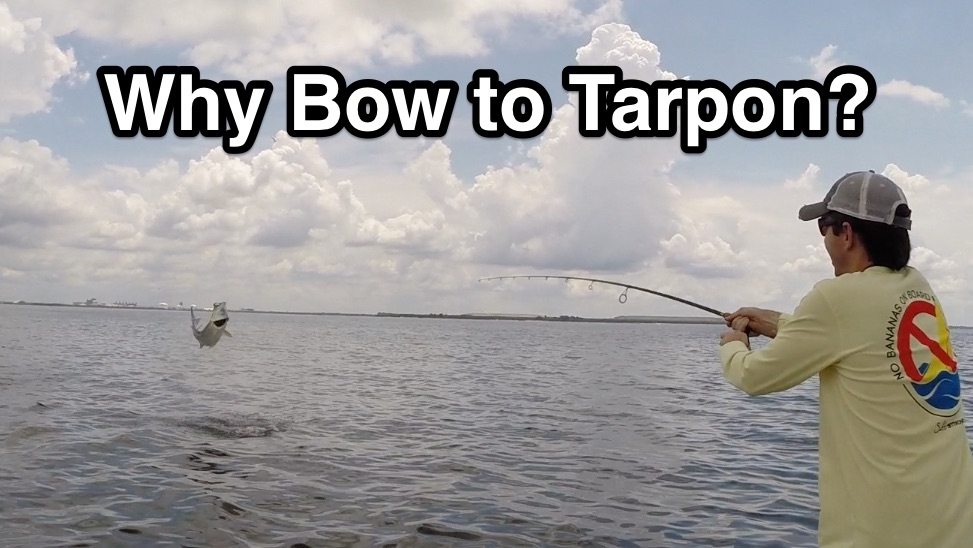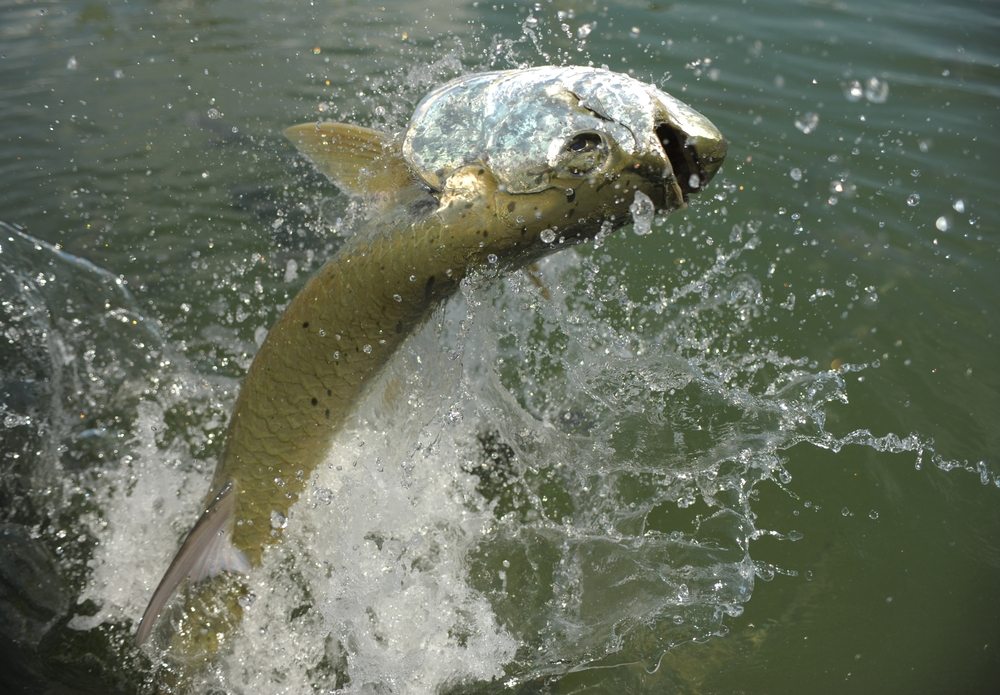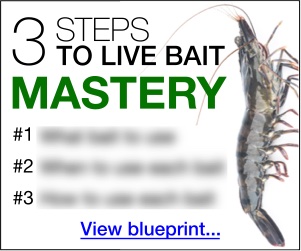Tarpon Fighting Tip – Why Should You “Bow to the King”?
- By: Luke Simonds
- on
- Found In: Fishing Tips, Tarpon Tips

Bow to the King baby!
As you have probably noticed while watching tarpon fishing videos, tarpon anglers most often point their rod to tarpon when they jump.
This act is often referred to as “Bowing to the King”, and it’s certainly not just a fad… it’s a practice that has been around for many years.
And recently, we have received a few comments on our Tarpon videos from anglers in all different parts of the country (and even a couple of Aussies) wondering “Why do you bow to a Tarpon?”.
Let’s discuss…
Why Bow to Tarpon?

The reason anglers bow to tarpon is because these powerful fish jump like crazy (putting on some of the best aerial acts in fishing history), and bowing (aka holding your rod tip down in the direction of the tarpon and taking some of the pressure off of the line) helps decrease the odds of the hook pulling out or the line breaking as a result of their powerful jumps and violent head shakes.
I recently read a great technical explanation relating to bowing to tarpon came from a recent post from Tom Roland on his Saltwater Experience website (click here to see his full post)…
In it, Tom explains that the increased acceleration caused when the tarpon goes from dense water to the much less dense air combined with the high tension on the line from the drag on the water (especially fly lines) can cause the hook to pull out.
And although our more modern tackle like sharper and stronger hooks can better ensure a good hook set, the need for bowing is still there… especially when using low-stretch lines line braid and/or fluorocarbon because there isn’t as much stretch in the line to absorb the shock.
How To Bow To A Tarpon

The most important aspect of bowing to a tarpon is to focus on exactly what the fish is doing. There is a lot that can go wrong when fighting such a big and powerful fish, so focus is crucial.
When fighting a tarpon, I focus on the line going into the water… when it starts rising during a run, then I know it’s time to be ready for the bow and I make sure to keep my rod fairly elevated.
Then, as soon as the tarpon breaks the surface, it’s time to drop the rod tip and point it directly at the tarpon with full arm extension if possible (especially if using non-stretch line like braid).
Once the fish lands, then it’s time to apply pressure again… and back to watching the line to be ready for the next jump.
So here’s a quick list of things to keep in mind when fighting a tarpon:
- Keep good pressure on the fish with the rod at least partially elevated
- Watch the line… get ready for a jump when it rises towards the fish
- Point rod directly at the fish once it breaks the surface (leaning forward and extending arms preferred)
- Go back to normal fighting stance once the fish lands and be on the lookout for the next jump
Below if a video from a recent tarpon I hooked in Tampa Bay in case you’d like to see the bowing tips in action:
Conclusion
Tarpon fishing can be an incredibly fun and challenging activity. They are incredibly strong fish that will not give up without putting on a heck of a fight that often involves multiple jumps, screaming drag, and violent head shakes.
Given how tough it is to land a fish of this size and strength, make sure you do everything you can to increase your odds of landing a trophy… this includes getting proper gear, bait, and of course includes being ready to “Bow to the King” when the opportunity comes.
Fish On!
P.S. – CLICK HERE to see the leader assembly that helped me increase my overall line strength by 30%… it includes must know knots for those who use braided line.
Related categories:
STOP WASTING TIME ON THE WATER!
Do what the “SMART ANGLERS” are doing and join the Insider Club.
Here’s what you’ll receive today when you join:
- Weekly fishing reports and TRENDS revealing exactly where you should fish ever trip
- Weekly “spot dissection” videos that walk you through all the best spots in your area
- Exclusive fishing tips from the PROS you can’t find anywhere else
- Everything you need to start catching fish more consistently (regardless if you fish out of a boat, kayak, or land).
STOP WASTING TIME ON THE WATER!
Do what the “SMART ANGLERS” are doing and join the Insider Club.
Here’s what you’ll receive today when you join:
- Weekly fishing reports and TRENDS revealing exactly where you should fish every trip
- Weekly “spot dissection” videos that walk you through all the best spots in your area
- Exclusive fishing tips from the PROS you can’t find anywhere else
- Everything you need to start catching fish more consistently (regardless if you fish out of a boat, kayak, or land).











If your worried about to much pressure on the line do not bow. This takes away the rod’s ability to bend and now all the tension is on the line. Just keep the rod pointed up and let the action of the rod do the work.
I do not “bow to the fish” because I am more concerned with the Tarpon throwing the relatively heavy fly than I am with the possibility of him landing on and breaking the leader. I maintain pressure on the fish and let the rod and the line absorb the shock in the unlikely event the fish lands on the line,(unless you’re using an extremely light leader).
Would you do the same thing if you hook a large snook or ladyfish? Just wondering because i tend to lose them a lot when they jump
Given the strength and weight of tarpon, the bow is very important. As for snook, I have not seen a big difference one way or the other. And for ladyfish, their shakes are so quick along with their mouths being so thin that a large amount of them will throw the lure/hook… the more weight the lure is the more likely it’ll sling it away.
I just want to know where I can get more of the Made in USA technical long-sleeved fishing shirts I bought from Salt Strong before they decided to focus only on fishing school for Florida inshore saltwater fish. I fish for resident and anadromous fish here in the Inland Northwest, and I fish Long Range out of San Diego for pelagics. I want more shirts. When I spin fish for snook, channel bass and snook in Florida, I’ll look to the Salt Strong guys for advice. In the meantime, I want to know where to buy Made in USA polyester knit fishing shirts.
Good advice, I hooked about 8 juveniles this past Sunday and they all tossed the hook every jump, but I was also fishing in a creek about 20ft wide with mangroves and sticks poking out into the creek from every angle just above the water. I did manage to keep one hooked but he ended up jumping over a branch and hung me up lol. I’m determined to land one in close quarters combat now, that bow technique may also actually help to keep my line low and out of the sticks when they jump